(单词翻译:单击)
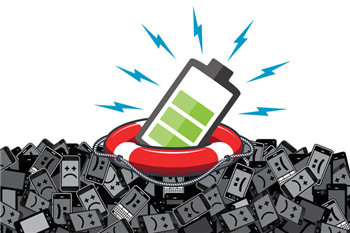
Ashlei Temena’s family trip to Disneyland last Thanksgiving break turned into a nightmare when her smartphone battery hit empty.
因为智能手机没电了,阿什莱·特米纳(Ashlei Temena)一家上个感恩节的迪斯尼乐园之旅变成了噩梦。
Ms. Temena, a San Francisco support technician, had gotten separated from her family and realized she had no way to find anyone. Instead of riding roller coasters, she wandered around searching for the group — eventually locating them four hours later watching fireworks.
特米纳是一位旧金山的技术支持工程师,她在旅途中和家人走散后,发现没有办法找到他们了。她没有坐过山车,而是到处寻找家人,后来过了四个小时,看烟火的时候才找到他们。
“I wanted to throw my phone on the ground by the end of the day,” Ms. Temena said.
“那天到最后我真想把手机往地上摔,”特米纳说。
Many consumers can relate. Despite the leaps forward in mobile phone technology with crisp, clear screens and faster chips, batteries have made only sluggish progress. That has propelled a desire for longer battery life to the top of the list of factors considered by consumers when they purchase smartphones, according to a 2014 survey by the research firm IDC.
很多消费者都会有同感。尽管手机技术的飞跃带来了清晰的显示屏和快速的芯片,电池仍然是唯一的滞后环节。因此,根据调查公司IDC于2014年进行的一项调查,“电池续航更长”成了消费者购买智能手机时的首要因素之一。

So why is battery technology still underwhelming? Plenty of companies have been developing smarter battery technology for years, including methods to increase battery capacity tenfold or charge devices by pulling energy from the air. But lithium ion, the technology that most mainstream batteries are based on, is low cost and easily reproducible while being safe — so we’ll be stuck with it for the foreseeable future, said Charlie Quong, an executive at Mophie, a battery accessory maker, in an interview.
电池技术的发展为何仍然普通?很多公司都已多年开发智能电池技术,包括将电池容量增加十倍的方法,或者从空气中吸取能量的充电设备等。但是目前主流的电池都是锂电池,它成本较低、容易降解,而且安全,所以我们在可预测的未来还将使用它,电池配件制造商Mophie公司的一位高管查理·奎昂(Charlie Quong)在接受采访时说。
“There’s a lot of investments on all fronts for improving the technology above and beyond that, but I don’t think we’re going to see that hitting any kind of mass market for several years out,” Mr. Quong said. In general, lithium ion improves about 10 percent a year in terms of the amount of energy that can be stored in a given space, which is partly why consumers perceive batteries as being far behind other technologies.
“在电池技术前沿已经有过不少投资,但我认为,新技术几年内不会大规模投放市场,”奎昂说。总的来说,锂电池技术的进步保持在一年可以增加10%的固定空间蓄电量水平,所以消费者觉得电池技术的进步远比其他技术进步要慢。
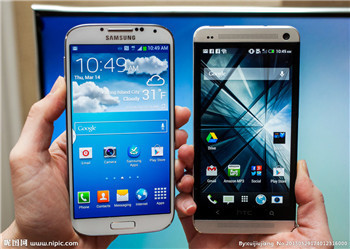
With that backdrop in mind, we teamed up with the Wirecutter, a product recommendations website, to run an array of tests to determine best and worst practices for preserving battery life on smartphones. For those who still need extra juice, the Wirecutter also picked some external battery products.
了解了这个背景,我们与产品推荐网站the Wirecutter联系,做了一系列实验,找到为智能手机省电的最好办法。对于希望额外电量的人,Wirecutter还提供了一些充电宝类的产品。
The results showed that some conventional beliefs about extending battery life — like turning off Wi-Fi or shutting down all your phone’s apps — produced negligible or even harmful results. The Wirecutter also found plenty of helpful practices to get more use out of your battery, like playing music stored directly on the device (instead of streaming it) or tweaking email configurations.
实验结果表明,某些传统的省电方式――诸如关闭Wi-Fi或关闭手机应用――被证明没有用处,甚至是有害的。Wirecutter还发现了很多有用的做法,可以更经济地使用电池,比如把音乐直接存储在设备里(不要用流媒体收听)或优化邮件设置。
The Wirecutter tested a range of recent Apple and Android smartphones with the latest operating systems in tightly controlled environments. Your phone’s results will vary depending on the phone model, cellular carrier, location and other factors, but the general results should hold. Here are eight tips and seven myths busted by our findings:
Wirecutter在严格控制的环境下测试了一系列安装了最新操作系统的最新版本苹果手机和安卓智能手机。在你的手机上使用效果如何,可能取决于手机型号、手机运营商、位置与其他因素,但是大致结果应当是不变的。下面是我们发现的8条省电小贴士与7条被证明错误的说法:
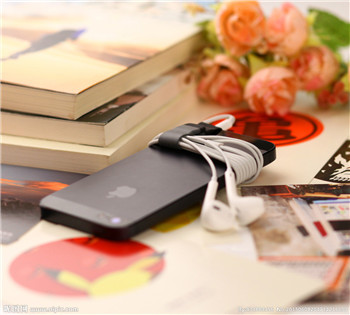
1. Use auto-brightness for the screen.
1.使用屏幕自动亮度调节
A smartphone’s screen consumes more energy than any other component, so the easiest way to cut down battery drain is to reduce your screen brightness. In an hourlong test, an iPhone 6s used 54 percent less battery power with the screen brightness at minimum as compared with maximum brightness. An Android test phone used 30 percent less.
智能手机的屏幕是所有元件里最耗电的,所以降低屏幕亮度是降低电池损耗的最简单的办法。在一个为时一小时的测试里,一台把屏幕调到最暗的iPhone 6S手机要比把亮度调到最亮的手机节省54%的电量。在安卓手机测试里,能节省30%电量。
But it’s tough to use a dim screen in bright environments, so most phones offer an auto-brightness mode that automatically adjusts the screen’s brightness based on ambient light. The Wirecutter found that enabling auto-brightness saved a good amount of battery life.
但是在明亮的环境下使用昏暗的屏幕是非常难受的,所以大多数手机都提供自动亮度调节模式,可以根据周围环境的亮度自动调节屏幕亮度。Wirecutter发现,开启自动亮度调节能够节省大量电量。
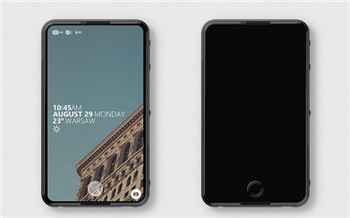
2. Block power-sucking ads.
2. 屏蔽耗电的广告
When browsing the web, your smartphone also burns through power when it downloads mobile ads on websites. Installing an ad blocker will greatly extend battery life.
浏览网页时,你的智能手机会下载网页上的移动广告,这样会耗费大量电量。安装广告屏蔽应用可以延长大大延长电池使用时间。
The Wirecutter ran a test that cycled through a list of websites for two hours over a Wi-Fi connection. Safari on an iPhone 6s used 18 percent of a full battery; Chrome on a Moto X Pure Android phone used 22 percent. Installing the 1Blocker ad blocker on the iPhone reduced battery usage for the same test to only 9 percent of a full battery; on an Android phone, using the Ghostery Privacy Browser, which blocks ads, used only 8 percent of the battery.
Wirecutter在连接Wi-Fi的情况下,用2小时浏览了若干网站。iPhone 6s上的Safari浏览器使用了18%的电量;安卓手机Moto X Pure上的Chrome浏览器使用了22%的电量。iPhone手机上安装了广告屏蔽应用 1Blocker 后,以同样时间浏览同样网页,电池使用量降低到9%;在安卓手机上安装了屏蔽广告的Ghostery Privacy Browser浏览器之后,同样情况下只用了8%的电池电量。
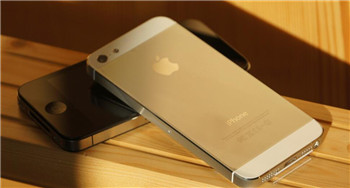
3. Tweak your email settings.
3. 优化邮件设置
Email can have a major impact on battery life if you have multiple email accounts and receive lots of email. Your smartphone can update your email automatically using a technology called push, which brings new messages to your phone the instant they are transmitted. Push can be a power hog because it requires your phone to constantly listen for new messages, so if you get a lot of email, there’s a good chance your phone is using lots of energy.
如果你拥有好几个邮件账号,并且收发大量邮件,电子邮件对电池使用时间会有很大影响。你的智能手机会使用推送技术自动更新邮箱情况,一旦收到邮件就立刻在你的手机上显示新信息。推送可以成为耗电大户,因为它需要你的手机一直接收新消息,所以如果你有很多电子邮件,你的手机就会耗很多电。
The Wirecutter tested an iPhone 6s Plus configured with three email accounts, receiving a total of 20 to 30 messages an hour. In these tests, having push active over the course of a day caused Mail to account for 5 to 10 percent of the phone’s overall battery use.
Wirecutter测试了一台有三个电子邮件账户,每小时收20到30个邮件的iPhone 6s Plus手机。在这个测试中,如果打开推送,每天会令邮箱多耗5%到10%的电池电能。
To save energy, most phones can be configured to instead check for (or “fetch”) emails on a schedule — say, every 30 minutes — or only when you manually tell your email app to refresh.
为了节省电能,大多数手机都可以设置定时检查(或“获取”)邮件,比如每30分钟获取一次,或者手动更新。
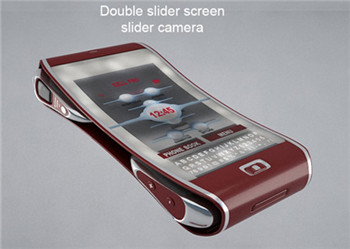
4. Play downloaded music instead of streaming.
4. 播放下载音乐,而不是使用流媒体收听
The next tip may come as unwelcome news. nowadays, online streaming is the most popular way to listen to music, with services like Spotify, Pandora and Apple Music — but this method guzzles lots of battery power. In the Wirecutter’s tests, streaming music over a Wi-Fi connection for two hours used 10 percent of an iPhone’s battery reserves; streaming the same music stored directly on a device over two hours consumed only 5 percent.
这条提示可能不怎么受欢迎。如今,使用Spotify、Pandora和Apple Music等在线流媒体是最受欢迎的听音乐方式,不过,这种方式也损耗不少电能。根据Wirecutter的测试,Wi-Fi模式下,用流媒体方式收听2小时音乐,会用掉iPhone电池的10%;而在同等情况下使用下载方式收听,只使用5%。
Fortunately, streaming services like Spotify and Apple Music still let you listen to songs the old-school way: by storing the music right on your device.
幸运的是,Spotify和Apple Music 都允许你以传统方式收听音乐——把歌曲下载到设备里。


